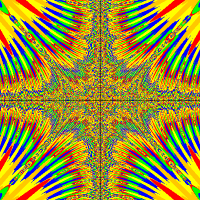I've seen the threads which have discussed this but I still have trouble identifying the solution to my problem. So I've had this problem in my past projects but I've found other ways around it, but it messed up other code in different classes.
So I've made a pipe in "myWorld" which sends Mario to "CoinWorld" when Mario is on it. I've added a clump of coins in the middle of "CoinWorld", as I was testing it, Mario touched the coin and this error popped up. It led me to the class coin, where the error lies in the checkTouch() method:
So how can I be able to access the same scoreboard without casting? Or is there some other solution?
Here is the myWorld class which carries the scoreboard I need to access:
And here's the pipe class where I changed the world into "CoinWorld":
One of the errors I come across the most, so finding a solution around this will be a life-saver!
public class Coin extends Items
{
/**
* Act - do whatever the Coin wants to do. This method is called whenever
* the 'Act' or 'Run' button gets pressed in the environment.
*/
public void act()
{
checkTouch();
}
public void checkTouch()
{
MyWorld world = (MyWorld)getWorld();
ScoreBoard getScoreBoard = world.getScoreBoard();
if(isTouching(Mario.class))
{
getScoreBoard.addScore(5);
world.removeObject(this);
}
}
}public class MyWorld extends greenfoot.World
{
GreenfootImage bg = new GreenfootImage("MarioBackground.png");
private ScoreBoard theScoreboard;
private Mario mario;
private int level = 1;
/**
* Constructor for objects of class MyWorld.
*
*/
public MyWorld()
{
super(1500, 500, 1);
setBackground(bg);
theScoreboard = new ScoreBoard();
mario = new Mario();
prepare();
}
/**
* Prepare the world for the start of the program.
* That is: create the initial objects and add them to the world.
*/
private void prepare()
{
// switches sections everytime mario hits the edge of the world, must complete three sections each time to go to the next level
switch(level)
{
case 2:
// entities
addObject(mario,95,460);
Koopa koopa = new Koopa();
addObject(koopa,616,172);
Koopa koopa2 = new Koopa();
addObject(koopa2,1356,326);
// flooring
addFloor();
removeFloor(800, 20);
// other
addObject(theScoreboard,100, 50);
addObject(new Timer(), getWidth()/2, 50);
// platforms
regularBlocks(175,350,8);
regularBlocks(406,202,10);
regularBlocks(445,95,3);
regularBlocks(541,95,3);
regularBlocks(700,350,8);
regularBlocks(925,450,8);
regularBlocks(1200,358,8);
regularBlocks(1237,258,2);
regularBlocks(1309,258,2);
// coinblocks
coinBlocks(517,95,1);
coinBlocks(1285,258,1);
// walls
addWalls(480,226,4,4);
addWalls(480,394,4,4);
addWalls(973,258,4,4);
addWalls(973,0,4,8);
// coins
Coin coin = new Coin();
addObject(coin,514,352);
Coin coin2 = new Coin();
addObject(coin2,1005,212);
Coin coin3 = new Coin();
addObject(coin3,490,25);
Coin coin4 = new Coin();
addObject(coin4,550,24);
Coin coin5 = new Coin();
addObject(coin5,210,304);
Coin coin6 = new Coin();
addObject(coin6,306,302);
Coin coin7 = new Coin();
addObject(coin7,749,314);
Coin coin8 = new Coin();
addObject(coin8,827,314);
Coin coin9 = new Coin();
addObject(coin9,1284,317);
Coin coin10 = new Coin();
addObject(coin10,1007,411);
break;
case 1:
// entities
addObject(mario, 95, 460);
// objects
addObject(theScoreboard,100, 50);
addObject(new Timer(), getWidth()/2, 50);
// walls
addWalls(192,392,4,4);
addWalls(360,272,4,9);
addWalls(528,392,4,4);
// platforms
regularBlocks(695,416,6);
regularBlocks(12,300,5);
// flooring
addFloor();
removeFloor(288,3);
removeFloor(456,3);
// pipes
VerticalPipe verticalPipe = new VerticalPipe();
addObject(verticalPipe,26,253);
break;
case 3:
addFloor();
removeFloor(getRandomNumber(500,750), 8);
removeFloor(getRandomNumber(1000, 1250), 9);
addObject(new Timer(), getWidth()/2, 50);
addObject(mario, 95, 460);
addingKoopas(level);
Flag flag = new Flag();
addObject(flag,1450,335);
EmptyBlock emptyBlock = new EmptyBlock();
emptyBlock.getImage().scale(47, 50);
addObject(emptyBlock,1450, 455);
}
}
public void nextSection()
{
removeObjects(getObjects(null)); //removes all objects
level++; //moves to next section
prepare(); // adds all objects for section 2
}
// This method auto-generated a floor for the entire level, no matter how long it is! Wohoo generalization :)
public void addFloor()
{
Block block = new Block();
int blockWidth = block.getImage().getWidth();
int blockHeight = block.getImage().getHeight();
int numBlocksFloor = getWidth() / blockWidth;
for (int i = 0; i <= numBlocksFloor; ++i)
{
addObject(new Block(), i*blockWidth, getHeight() - blockHeight/2);
}
}
// This method auto-generates a singular gap in the floor whenever requested; able to control the distance of the gap and where it will be located
public void removeFloor(int xValue, int gapDistance)
{
Block block = new Block();
int blockHeight = block.getImage().getHeight();
int blockWidth = block.getImage().getWidth();
for(int i = 0; i < gapDistance; i++)
{
removeObjects(getObjectsAt(xValue + i*blockWidth, getHeight() - blockHeight/2, Block.class));
}
}
// A modular method designed to add coin blocks in clumps of [amount of blocks] whenever requested
public void coinBlocks(int xStart, int yStart, int blocks)
{
CoinBlock cb = new CoinBlock();
int blockWidth = cb.getImage().getWidth();
for(int a = 0; a < blocks; a++)
{
addObject(new CoinBlock(), xStart+(a*blockWidth), yStart);
}
}
// A modular method designed to add regular blocks as platforms
public void regularBlocks(int xStart, int yStart, int blocks)
{
Block block = new Block();
int blockWidth = block.getImage().getWidth();
for(int i = 0; i < blocks; i++)
{
addObject(new Block(), xStart+(i*blockWidth), yStart);
}
}
// a method designed to create a huge clump of blocks and make a brick wall
public void addWalls(int xStart, int yStart, int blocks, int rows)
{
Block block = new Block();
int blockHeight = block.getImage().getHeight();
for(int i = 0; i < rows; i++)
{
regularBlocks(xStart,yStart+(i*blockHeight),blocks);
}
}
// This method adds and controls the amount of koopas that are added into the world
public void addingKoopas(int koopas)
{
for(int i = 0; i < koopas; i++)
{
addObject(new Koopa(), getRandomNumber(500,1300), getHeight()/2);
}
}
public void addingParas(int paras)
{
for(int i = 0; i < paras; i++)
{
addObject(new ParaTroopa(), getRandomNumber(500, 1300), 80);
}
}
// A method which generates a number between the desired values
public int getRandomNumber(int start,int end)
{
int normal = Greenfoot.getRandomNumber(end-start+1);
return normal+start;
}
public Mario getMario()
{
return mario;
}
public ScoreBoard getScoreBoard()
{
return theScoreboard;
}
}public class VerticalPipe extends Platform
{
/**
* Act - do whatever the VerticalPipe wants to do. This method is called whenever
* the 'Act' or 'Run' button gets pressed in the environment.
*/
public void act()
{
checkMario();
}
// This method checks if mario is on top or not
public void checkMario()
{
int blockHeight = getImage().getHeight();
int yDistance = blockHeight/-2;
Actor mario = getOneObjectAtOffset(0,yDistance - 5, Mario.class);
if(mario != null)
{
Greenfoot.setWorld(new CoinWorld());
}
}
}




